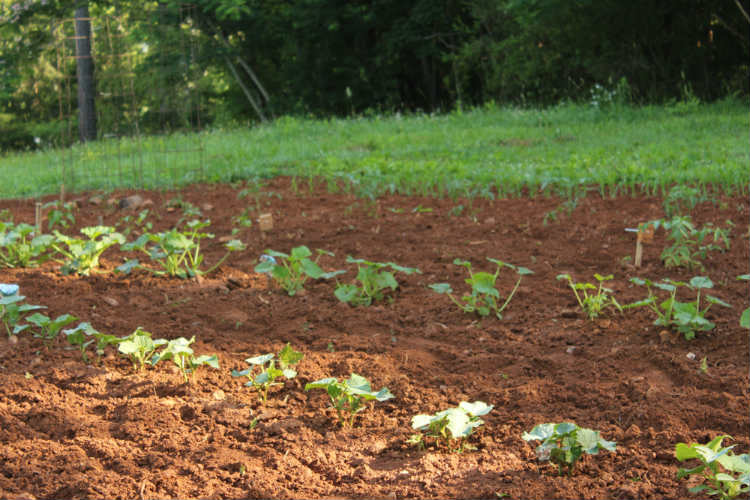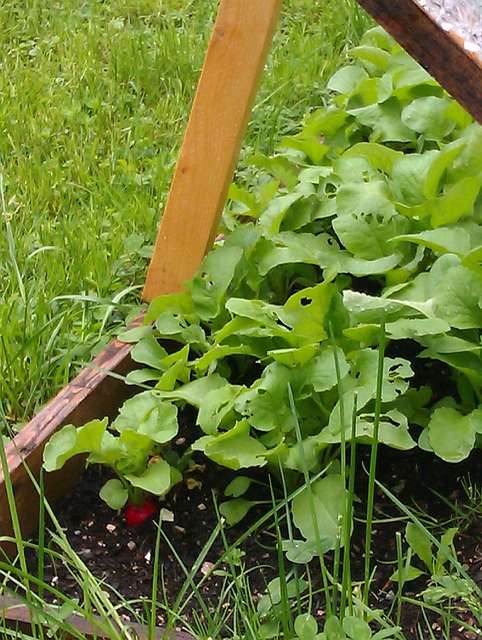30+ Vegetables That Grow in Shade

Make sure to like Living Green and Frugally on Facebook, Shop at Amazon to help support my site and explore our PINTEREST BOARDS for innovative ways you can become self-sufficient.
Title: 30+ Shade-Loving Vegetables: A Comprehensive Guide to Cultivating Your Garden’s Hidden Bounty
In the realm of gardening, sunlight is often considered a primary factor for success. However, not all garden spaces are bathed in sunlight throughout the day. For those with shaded areas, fear not! There exists a diverse array of vegetables that thrive in the cool embrace of shade. In this comprehensive guide, we’ll delve into over 30 shade-loving vegetables, exploring their characteristics, cultivation methods, optimal growing seasons, sunlight requirements, harvesting tips, and noteworthy varieties to consider.
- Lettuce:
- How to Grow: Lettuce prefers cooler temperatures and partial shade. Sow seeds directly into well-drained soil, keeping it consistently moist.
- Best Time of Year: Spring and fall are ideal for lettuce cultivation.
- Sunlight Requirements: Partial shade with 4-6 hours of sunlight daily.
- Harvest: Harvest leaves when they reach desired size, typically within 30-70 days.
- Varieties to Consider: Butterhead, Romaine, Loose-leaf.
- Spinach:
- How to Grow: Sow spinach seeds in rich, well-draining soil. Keep consistently moist to prevent bolting.
- Best Time of Year: Early spring or late summer/fall.
- Sunlight Requirements: Partial shade to full sun (especially in cooler climates).
- Harvest: Begin harvesting outer leaves when mature, around 35-50 days after planting.
- Varieties to Consider: Bloomsdale, Tyee, Baby’s Leaf.

- How to Grow: Plant kale in fertile, well-draining soil. Water regularly and mulch to retain moisture.
- Best Time of Year: Cool seasons of spring and fall.
- Sunlight Requirements: Partial shade to full sun.
- Harvest: Harvest outer leaves as needed, starting around 55-75 days after planting.
- Varieties to Consider: Lacinato (Dinosaur kale), Curly kale, Red Russian.
- How to Grow: Sow arugula seeds directly into moist, well-draining soil. Keep soil consistently moist for best growth.
- Best Time of Year: Spring and fall.
- Sunlight Requirements: Partial shade to full sun.
- Harvest: Harvest leaves when young and tender, usually within 30 days of planting.
- Varieties to Consider: Astro, Rocket, Wild.
- How to Grow: Plant chard in fertile, well-draining soil. Water regularly, especially during dry spells.
- Best Time of Year: Spring and fall.
- Sunlight Requirements: Partial shade to full sun.
- Harvest: Begin harvesting outer leaves when mature, around 50-60 days after planting.
- Varieties to Consider: Bright Lights, Fordhook Giant, Ruby Red.
- How to Grow: Sow radish seeds directly into loose, well-draining soil. Keep consistently moist for best growth.
- Best Time of Year: Cool seasons of spring and fall.
- Sunlight Requirements: Partial shade to full sun.
- Harvest: Harvest radishes when roots reach desired size, typically within 20-30 days.
- Varieties to Consider: Cherry Belle, French Breakfast, Daikon.

- How to Grow: Plant bok choy in fertile, well-draining soil. Keep soil consistently moist.
- Best Time of Year: Cool seasons of spring and fall.
- Sunlight Requirements: Partial shade to full sun.
- Harvest: Harvest entire heads when mature, around 45-60 days after planting.
- Varieties to Consider: Joi Choi, Baby Bok Choy, Toy Choi.
- How to Grow: Sow mizuna seeds directly into fertile, well-draining soil. Keep soil moist for best growth.
- Best Time of Year: Spring and fall.
- Sunlight Requirements: Partial shade to full sun.
- Harvest: Harvest outer leaves when young and tender, usually within 30 days.
- Varieties to Consider: Kyoto, Early Mizuna, Ruby Streaks.
- How to Grow: Plant endive in rich, well-draining soil. Keep consistently moist.
- Best Time of Year: Cool seasons of spring and fall.
- Sunlight Requirements: Partial shade to full sun.
- Harvest: Harvest outer leaves as needed, starting around 40-75 days after planting.
- Varieties to Consider: Green Curled Ruffec, Broad-leaved Batavian, Frisée.
- How to Grow: Sow mustard green seeds directly into fertile, well-draining soil. Keep soil moist.
- Best Time of Year: Spring and fall.
- Sunlight Requirements: Partial shade to full sun.
- Harvest: Harvest leaves when young and tender, usually within 40-50 days.
- Varieties to Consider: Southern Giant Curled, Red Giant, Mizuna.
- How to Grow: Plant scallion seeds or sets in well-draining soil. Keep soil consistently moist.
- Best Time of Year: Spring and fall.
- Sunlight Requirements: Partial shade to full sun.
- Harvest: Harvest when green tops reach desired size, typically within 60-90 days.
- Varieties to Consider: Evergreen White Nebuka, Red Beard, Parade.
- How to Grow: Plant garlic cloves in well-draining soil with good organic matter. Keep soil evenly moist.
- Best Time of Year: Fall for most regions.
- Sunlight Requirements: Partial shade to full sun.
- Harvest: Harvest when foliage begins to yellow and dry, usually 6-9 months after planting.
- Varieties to Consider: Softneck (Silverskin, Artichoke), Hardneck (Rocambole, Porcelain).
- How to Grow: Plant onion sets or seeds in fertile, well-draining soil. Keep soil consistently moist.
- Best Time of Year: Spring for sets, fall for seeds.
- Sunlight Requirements: Partial shade to full sun.
- Harvest: Harvest when bulbs reach desired size and tops begin to yellow and fall over.
- Varieties to Consider: Yellow, Red, White, Sweet (Candy, Walla Walla).
- How to Grow: Sow pea seeds directly into cool, moist soil. Provide support for climbing varieties.
- Best Time of Year: Early spring for cool climates, fall for mild climates.
- Sunlight Requirements: Partial shade to full sun.
- Harvest: Harvest pods when peas are plump and sweet, usually within 60-70 days.
- Varieties to Consider: Sugar Snap, Snow Pea, English Pea.
- How to Grow: Sow bean seeds directly into warm, well-draining soil after the last frost. Provide support for climbing varieties.
- Best Time of Year: Spring and summer.
- Sunlight Requirements: Partial shade to full sun.
- Harvest: Harvest when pods are firm and crisp, usually within 50-70 days.
- Varieties to Consider: Green Beans (Bush and Pole), Yellow Wax Beans, Purple Beans.
- How to Grow: Plant broccoli transplants in fertile, well-draining soil. Keep soil consistently moist.
- Best Time of Year: Cool seasons of spring and fall.
- Sunlight Requirements: Partial shade to full sun.
- Harvest: Harvest main head when tight and compact, then side shoots as they develop.
- Varieties to Consider: Green Comet, Calabrese, Purple Sprouting.
- How to Grow: Plant cauliflower transplants in fertile, well-draining soil. Keep soil consistently moist.
- Best Time of Year: Cool seasons of spring and fall.
- Sunlight Requirements: Partial shade to full sun.
- Harvest: Harvest main head when compact and firm, before curds begin to separate.
- Varieties to Consider: Snowball, Purple of Sicily, Cheddar.
- How to Grow: Plant Brussels sprouts transplants in fertile, well-draining soil. Keep soil consistently moist.
- Best Time of Year: Cool seasons of spring and fall.
- Sunlight Requirements: Partial shade to full sun.
- Harvest: Harvest sprouts from bottom up as they reach desired size and firmness.
- Varieties to Consider: Long Island Improved, Churchill, Red Bull.
- How to Grow: Plant cabbage transplants in fertile, well-draining soil. Keep soil consistently moist.
- Best Time of Year: Cool seasons of spring and fall.
- Sunlight Requirements: Partial shade to full sun.
- Harvest: Harvest heads when firm and solid, before they split.
- Varieties to Consider: Green, Red, Savoy.
- How to Grow: Plant kohlrabi seeds or transplants in fertile, well-draining soil. Keep soil consistently moist.
- Best Time of Year: Cool seasons of spring and fall.
- Sunlight Requirements: Partial shade to full sun.
- Harvest: Harvest bulbs when they reach 2-3 inches in diameter.
- Varieties to Consider: Early White Vienna, Purple Vienna, Winner.
- How to Grow: Sow beet seeds directly into loose, well-draining soil. Keep soil consistently moist.
- Best Time of Year: Cool seasons of spring and fall.
- Sunlight Requirements: Partial shade to full sun.
- Harvest: Harvest roots when they reach desired size, usually within 50-70 days.
- Varieties to Consider: Detroit Dark Red, Golden, Chioggia.
- How to Grow: Sow carrot seeds directly into loose, well-draining soil. Keep soil consistently moist for best germination.
- Best Time of Year: Cool seasons of spring and fall.
- Sunlight Requirements: Partial shade to full sun.
- Harvest: Harvest roots when they reach desired size, usually within 50-80 days.
- Varieties to Consider: Nantes, Danvers, Cosmic Purple.
- How to Grow: Sow turnip seeds directly into loose, well-draining soil. Keep soil consistently moist.
- Best Time of Year: Cool seasons of spring and fall.
- Sunlight Requirements: Partial shade to full sun.
- Harvest: Harvest roots when they reach desired size, usually within 30-60 days.
- Varieties to Consider: Purple Top White Globe, Tokyo Cross, Golden Globe.
- How to Grow: Plant potato tubers in loose, well-draining soil. Keep soil consistently moist.
- Best Time of Year: Spring for cool climates, fall for warm climates.
- Sunlight Requirements: Partial shade to full sun.
- Harvest: Harvest when tops begin to yellow and die back, usually 70-120 days after planting.
- Varieties to Consider: Russet, Yukon Gold, Red Pontiac.
- How to Grow: Plant rhubarb crowns in fertile, well-draining soil. Keep soil consistently moist.
- Best Time of Year: Spring or fall.
- Sunlight Requirements: Partial shade to full sun.
- Harvest: Harvest stalks when thick and firm, usually after the second year of planting.
- Varieties to Consider: Victoria, Canada Red, Crimson Cherry.
- How to Grow: Plant asparagus crowns in well-draining soil in a permanent bed. Keep soil consistently moist.
- Best Time of Year: Spring for planting.
- Sunlight Requirements: Partial shade to full sun.
- Harvest: Begin harvesting spears when they reach 6-8 inches in height, usually in the second year after planting.
- Varieties to Consider: Mary Washington, Jersey Knight, Purple Passion.
- How to Grow: Plant radicchio seeds or transplants in fertile, well-draining soil. Keep soil consistently moist.
- Best Time of Year: Cool seasons of spring and fall.
- Sunlight Requirements: Partial shade to full sun.
- Harvest: Harvest heads when firm and compact, usually within 60-80 days.
- Varieties to Consider: Rossa di Treviso, Chioggia, Indigo.
- How to Grow: Plant celery transplants in fertile, well-draining soil. Keep soil consistently moist.
- Best Time of Year: Cool seasons of spring and fall.
- Sunlight Requirements: Partial shade to full sun.
- Harvest: Harvest stalks when they reach desired size and are crisp, usually within 90-120 days.
- Varieties to Consider: Utah, Tango, Golden Self-Blanching.
- How to Grow: Plant Jerusalem artichoke tubers in loose, well-draining soil. Keep soil consistently moist.
- Best Time of Year: Spring for planting.
- Sunlight Requirements: Partial shade to full sun.
- Harvest: Harvest tubers when they reach desired size, usually in late fall or winter.
- Varieties to Consider: Stampede, Fuseau, Red Fuseau.
- How to Grow: Plant horseradish crowns in loose, well-draining soil. Keep soil consistently moist.
- Best Time of Year: Spring or fall.
- Sunlight Requirements: Partial shade to full sun.
- Harvest: Harvest roots when they reach desired size, usually after the first frost.
- Varieties to Consider: Maliner Kren, Big Top, Bohemian.
In conclusion, a shade-filled garden doesn’t have to limit your vegetable-growing aspirations. With this comprehensive guide to over 30 shade-loving vegetables, you have a plethora of options to explore. From leafy greens to root vegetables and beyond, there’s something for every palate and gardening style.
By understanding each vegetable’s characteristics, optimal growing conditions, and varieties to consider, you can cultivate a thriving garden even in the shadiest of spaces. So, roll up your sleeves, grab your gardening tools, and let the shade be your ally in growing a bountiful harvest of nutritious and delicious vegetables. Happy gardening!